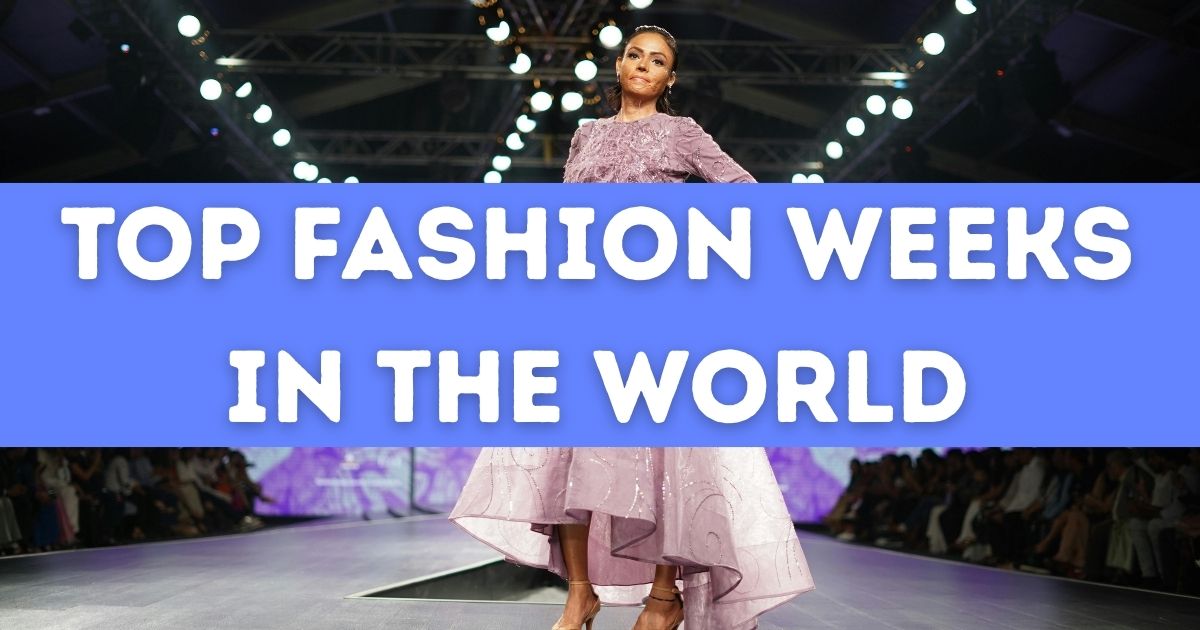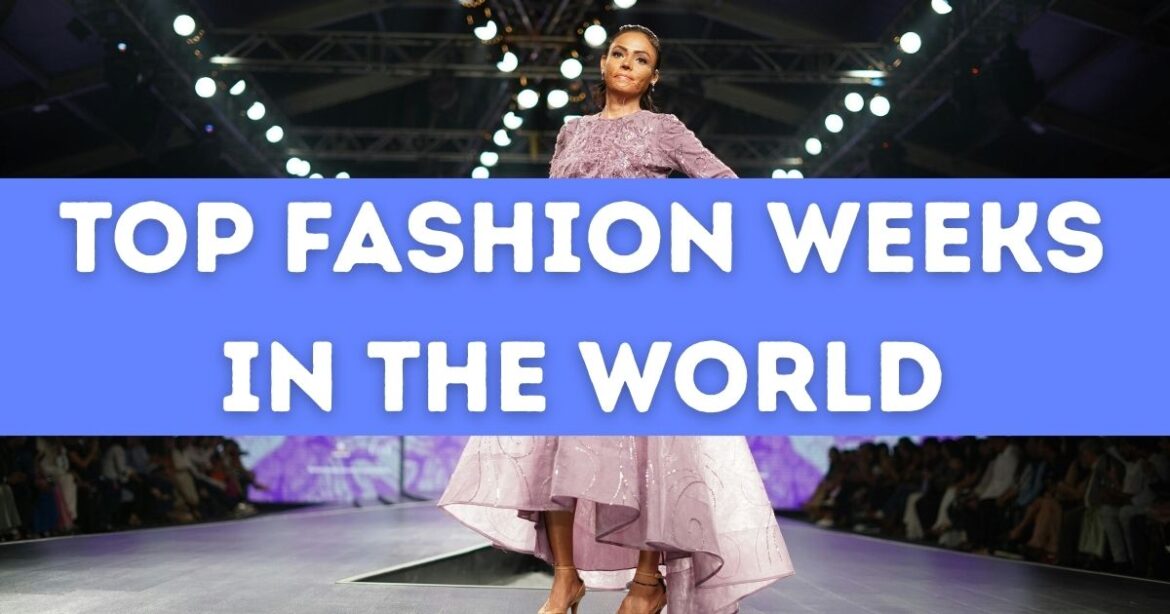Table of Contents
Top 10 Fashion Weeks in the World You Should Know About
When I first attended a fashion week, I realized how powerful a bi-annual event like this can be for the fashion industry. It is carefully organised in large cities worldwide, and the scale is incredible. The fashion shows with models parading down the runway feel like living art, while designers introduce their upcoming fashion collections.

I’ve noticed how important showcasing is, not just for buyers but also for the media, because it connects creativity with commerce. Having seen this process up close, I can say that these gatherings truly represent the heartbeat of global style.
The world’s most influential fashion week cities—Paris, London, New York, and Milan—are famously called the Big Four fashion week cities. These fashion weeks remain every designers’ favourite place to showcase their unique creations, blending combinations of classic fashion styles, current styles, and emerging fashion trends.
From what I’ve observed, even modern men are increasingly shopping for high-end fashion creations during these events, often before the masses get access. Anyone keeping a close eye on the world’s fashion weeks will see how these platforms shape the future of style globally.
Global Icons of Style
The Big Four fashion weeks remain the backbone of the industry, bringing together funding, infrastructure, and global media coverage. Having been part of these events, I’ve seen how critics, trendsetters, and influencers shape the story of every season. The strong support, prestigious awards, and spectacular shows highlight the vision of famous fashion designers in modern times, making each city’s event not just about clothes but about culture itself.
1. The Legacy of New York Fashion Week
The world’s first fashion week began in New York City on July 19, 1943, guided by Eleanor Lambert, founder of the New York Dress Institute. Its purpose was to give fashion buyers alternatives to French fashion during World War II, when the fashion industry in Paris was unreachable. In the 1990s, it delivered memorable moments like Marc Jacobs’ grunge spring 1993 Perry Ellis show and Kate Moss on the catwalk for Calvin Klein.
I remember watching how supermodels and celebrities such as Julia Roberts, Leonardo DiCaprio, Drew Barrymore, and Mariah Carey turned the spotlight on the event. Later, Bryant Park brought corporate sponsorship opportunities, and the biannual event became Mercedes-Benz Fashion Week. From Lincoln Center (2010–2015) to Tribeca Spring Studios (2016), it has grown to nearly 300 shows, proving why New York is still unmatched in its energy.
2. Paris: The Haute Couture Stage
Since the 1930s, Paris has been home to renowned fashion designers like Coco Chanel, Elsa Schiaparelli, and Madeleine Vionnet. By the 70s, Parisian fashion houses shifted from small events for wealthy clients into glamorous parties where models, buyers, critics, and celebrities mingled.
Organised by the French Fashion Federation, the first official Paris Fashion Week in 1973 staged the legendary Battle of Versailles Fashion Show, where Yves Saint Laurent, Christian Dior, Pierre Cardin, and Hubert de Givenchy faced off against American greats like Anne Klein, Oscar de la Renta, and Stephen Burrows. To me, Paris has always felt like the heartbeat of haute couture, balancing elegance with competition.
3. London: Creativity at its Core
The first London Fashion Week was launched by the British Fashion Council in October 1983, held in a car park near Kensington’s Commonwealth Institute. Young fashion designers such as Betty Jackson, David Fielden, and John Galliano had their debut here, with UK government funding soon following its success. In the 90s, I remember the buzz when Alexander McQueen showcased in 1993, and later Stella McCartney in 1995. London’s mix of rebellion and artistry makes it one of the most creative fashion weeks in the world.
4. Milan: Italy’s Sartorial Powerhouse
Before Milan became Italy’s fashion capital, aristocrat Giovanni Battista Giorgini staged shows at Palazzo Pitti in Florence in 1951, featuring Emilio Pucci and the Fontana sisters. By 1958, the official Milan Fashion Week launched with the Camera Nazionale della Moda Italiana.
Through the 1970s and 1990s, designers like Giorgio Armani and Gianni Versace transformed Milan into a global hub, with models like Cindy Crawford, Naomi Campbell, Christy Turlington, and Linda Evangelista becoming household names. To this day, Milan stands as the true sartorial capital of the world, something I’ve experienced firsthand walking its stylish streets.
When the World Watches
Fashion week is held twice a year, with designers presenting Autumn/Winter collections in February and March, and Spring/Summer collections in September and October. New York City kicks off the calendar (February 7–15), followed by London (February 15–19), then Milan (February 19–25), with Paris closing (February 25–March 5). The rhythm of these dates keeps the Big Four in sync while setting trends for the next season.
The Formats that Define Them
Each Fashion Week has its own particularities. Paris Fashion Week is famous for haute couture, New York Fashion Week balances business and leisure fashion, London Fashion Week is celebrated for creative fashion designers, while Milan Fashion Week shines with traditional fashion styles.
Beyond the Big Four Fashion Weeks, cities worldwide host thematic events like Miami Fashion Week and Rio Summer Fashion Week for swimwear, Indonesia Islamic Fashion Week for Muslim fashion, and Bangalore Fashion Week for festive wear.

1 comment
[…] of sustainability and conscious consumerism. Concerns about the environmental impact of fast fashion push people toward second-hand shopping, thrift stores, and vintage boutiques. I often encourage my […]